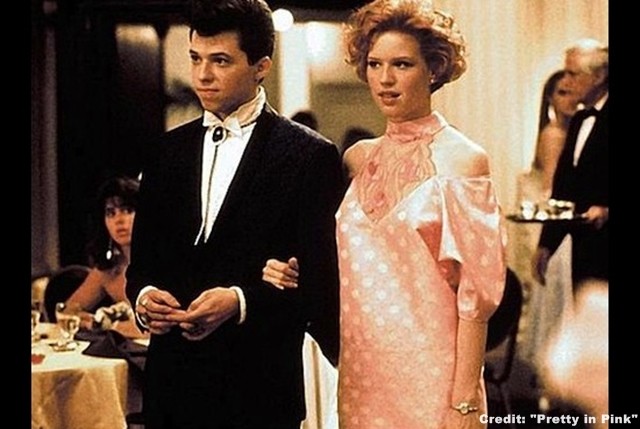 By Jae-Ha Kim
By Jae-Ha Kim
Chicago Sun-Times
May 2002
For some of her classmates going to the prom, a gown and flip flops are the way to go. But for Warren Township High School senior Courtney Crump, flat shoes are not an option.
“I’m very tall and thin so it’s difficult to find dresses that fit me,” says Crump, who at 5-foot-8 wears a size 2. “I found this dress that’s really pretty, but it’s really long. I have to wear heels.”
Welcome to proms-21st Century style. When proms gained popularity in the early 1930s, no young woman would’ve attended the dance without ladylike heels or a suitable date. These days, comfort is almost as important as fashion.
Not that the Gurnee resident really minds. Heels add glamour to the prom mystique. And when her boyfriend of 27 months, John Hagedorn, sees her in wearing the sleek, strapless floor-length gown, he smiles appreciatively at how pretty she looks.
“I saw the dress, but I never saw it on her,” says Hagedorn, 18. “She looks beautiful. But she always looks nice.”
Hagedorn is looking mighty natty himself in a black tuxedo. But let’s face it–proms, like weddings, are all about the girl. That’s how they’re marketed, and that’s how teens are socialized. Sociologist Amy L. Best takes the analogy even further. She believe proms basically are “pre-weddings,” judging by the way they’re marketed in prom magazines and in pop culture.
In her book Prom Night: Youth, Schools and Popular Culture, Best writes, “The prom was a democratized version of the debutante ball, an event historically attended by only the leisure class. As a ‘popularized’ debutante ball, the prom afforded anyone attending high school the opportunity to feel as though they too were ‘coming out,’ that they could transcend the boundaries of class. The message was that you did not have to be rich to wear a fancy frock, to be adorned with a corsage, or to waltz the night away.”
The message isn’t quite as clear when it comes to gay students bringing their dates to the prom. Though Jack brought his hunky boyfriend to his prom on “Dawson’s Creek,” many real-life schools aren’t as liberated. A gay student in Rhode Island sued his high school for the right to bring his male companion to the prom. Some schools also impose strict prom dress codes. Never mind that Jennifer Aniston is hailed as a fashionista when she wears a tuxedo to a black tie Hollywood event. Two sets of female twins were banned from wearing them to their prom in Decatur, Ill.
Over at Warren Township, Crump says the students aren’t allowed to wear jeans or gym shoes to their prom, but most enjoy the chance to dress up. What they’re not into is the escalating cost of attending prom.
“That’s one reason why kids don’t go to prom anymore, but it’s a fun memory,” she says. “Last year a friend of mine was prom queen. She had a huge crush on the prom king and his girlfriend was upset she didn’t win, so she left the dance. It was a big scandal at school. He ended up chasing after his girlfriend to smooth things over after he danced with my friend. It was hilarious.
“Last year it was $55 per couple. This year ticket prices went up to $100 for each couple. Then everyone takes limos, buys new dresses, gets their hair and nails done and all that. It can get pretty expensive.”
According to prom experts, the average prom sets students (or their parents) back about $800 per couple.
Crump and Hagedorn save a few bucks by driving a car to their prom, which is held at the Rosemont Convention Center, rather than renting a limo. And the after party they attend is at a friend’s house instead of a costly hotel.
And as for bucking tradition, they do it their way. They take along one of Crump’s friends who doesn’t have a prom date.
“I’m not sure it I’m going to dance with her though,” Hagedorn says, laughing. “That might be a little weird.”





